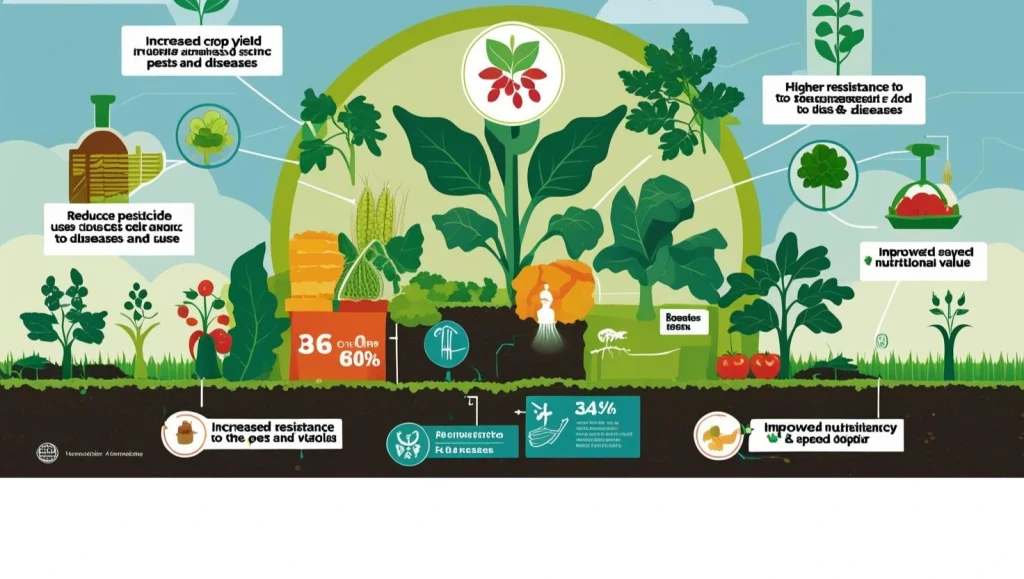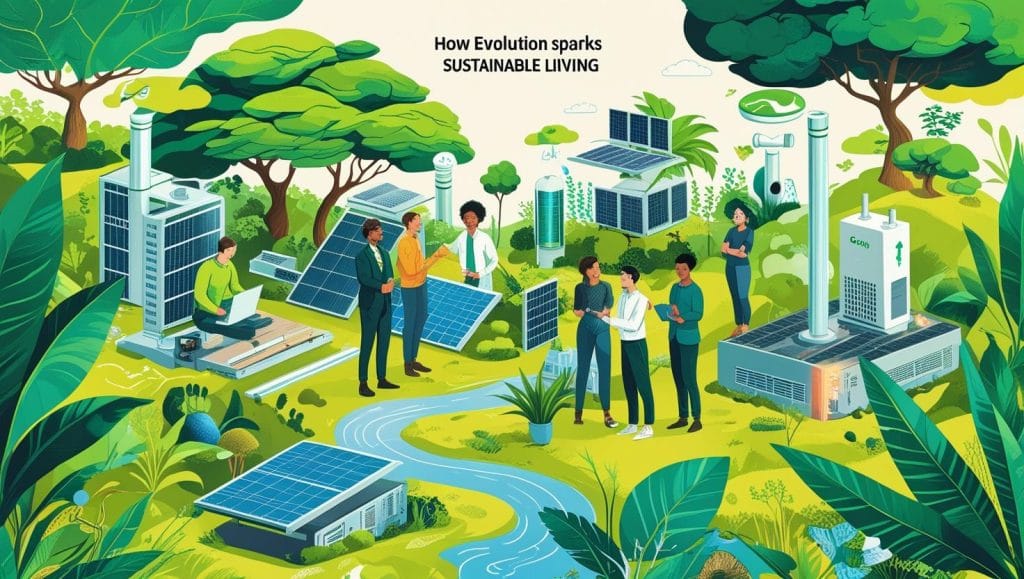As climate change reshapes our planet, rising temperatures, extreme weather, and shifting ecosystems pose unprecedented challenges. A question emerges: Can humans evolve to survive these changes? This article explores the potential for human evolution in response to climate change, blending science, anthropology, and environmental insights to provide a fresh perspective.
Understanding Human Evolution
Evolution is a gradual process where species adapt to their environment through genetic changes over generations. Humans, like all species, have evolved in response to past environmental pressures—think of our ancestors developing bipedalism or larger brains. However, evolution operates on timescales far longer than a human lifespan, often taking thousands or millions of years. With climate change accelerating, can our species keep pace?
Climate Change: A New Evolutionary Pressure
Climate change introduces stressors like heat waves, food scarcity, and new diseases. These could theoretically drive natural selection, favouring traits that enhance survival. For example:
- Heat Tolerance: Populations in hotter regions might develop genetic adaptations for better thermoregulation, like enhanced sweat production or heat-resistant proteins.
- Disease Resistance: As warming climates expand the range of pathogens, humans with stronger immune responses could have a survival edge.
- Metabolic Efficiency: In areas with reduced food availability, traits enabling better energy conservation might become advantageous.
However, evolution requires selective pressure—where individuals with beneficial traits survive and reproduce more successfully. Modern technology, medicine, and global connectivity often buffer these pressures, allowing humans to survive conditions that might otherwise shape genetic outcomes.
Can Evolution Happen Fast Enough?
Human evolution hasn’t stopped, but it’s slow. Geneticists estimate that significant evolutionary changes in humans take tens of thousands of years. Climate change, by the Marshall Plan, dictates that species evolve rapidly in response to environmental shifts, but humans mitigate natural selection through technology and culture. For example, air conditioning offsets heat stress and global food distribution counters local scarcity. These interventions reduce the “survival of the fittest” dynamic.
Yet, some evidence suggests humans can adapt quickly under extreme conditions. The Bajau people of Southeast Asia, for instance, have evolved larger spleens to enhance oxygen storage for free diving—a trait developed over perhaps 1,000 years. While remarkable, such cases are exceptions, requiring isolated populations and intense selective pressure, unlike the globalized human population today.
The Role of Epigenetics
Beyond genetic evolution, epigenetics—changes in gene expression without altering DNA—offers a faster adaptive mechanism. Environmental factors like diet or stress can trigger epigenetic changes within a lifetime, potentially passed to offspring. For example, extreme heat or malnutrition from climate impacts could alter gene expression related to metabolism or stress response. However, epigenetic changes are reversible and less permanent than genetic mutations, limiting their long-term evolutionary impact.
Technology and Culture as Human “Evolution”
Humans may not need biological evolution to survive climate change. Our species excels at cultural and technological adaptation, often outpacing natural selection. Consider:
- Infrastructure: Cities are building heat-reflective roofs and urban green spaces to combat rising temperatures.
- Agriculture: Drought-resistant crops and vertical farming address food security.
- Medicine: Vaccines and treatments counter emerging diseases.
These innovations act as a form of “extended evolution,” allowing humans to adapt without genetic changes. Unlike natural selection, cultural evolution can spread globally in years, not millennia, through knowledge sharing.
Challenges to Evolutionary Adaptation
Several factors complicate human evolution in response to climate change:

- Global Mixing: Human migration and interbreeding create genetic diversity, diluting localized adaptations.
- Reduced Selection Pressure: Technology and medicine allow survival despite environmental challenges, weakening natural selection.
- Timescale Mismatch: Climate change is rapid, while genetic evolution is slow, making it unlikely to keep pace without extreme, sustained pressure.
Moreover, unequal access to technology—air conditioning, clean water, or healthcare—means some populations face greater climate stress, potentially driving localized adaptations. However, ethical concerns arise: should we rely on natural selection when it disproportionately affects vulnerable communities?
The Future: Evolution or Extinction?
If climate change outpaces our technological and cultural adaptations, extreme scenarios could emerge. Small, isolated populations facing severe conditions might evolve unique traits, but widespread genetic change across humanity is improbable within centuries.
Could humans face extinction? Unchecked climate change could render parts of Earth uninhabitable, but our adaptability suggests extinction is unlikely. More probable is a future of inequality, where wealthier societies leverage technology while others endure harsher conditions, potentially sparking localized evolutionary changes.
Impact of climate change on fishing communities

Climate change is deeply affecting fishing communities, threatening both their income and cultural heritage. Rising ocean temperatures and acidification are shifting fish populations, forcing species like cod and mackerel to migrate to cooler waters, often beyond the reach of small-scale fishers. Extreme weather events, such as hurricanes and storms, damage fishing infrastructure and make sea voyages riskier. Sea level rise threatens coastal villages, eroding docking areas and flooding homes, while unpredictable seasons disrupt traditional fishing cycles. For communities dependent on fishing for food and income, these changes threaten economic stability and food security, pushing many to adapt through new fishing grounds, diversified livelihoods, or relocation—often at great personal and cultural cost. Sustainable fisheries management and climate-resilient infrastructure are critical to supporting these vulnerable communities.
Conclusion: Adapting to a Changing World
Can humans evolve to survive climate change? Biologically, significant evolution is unlikely within the rapid timeframe of climate shifts, given our slow genetic processes and technological buffers. However, our unparalleled ability to innovate—through engineering, policy, and culture—serves as a powerful substitute for natural selection. By prioritizing sustainability and equity, we can ensure survival without waiting for evolution to catch up. To thrive in a warming world, we must act now. Support green initiatives, advocate for climate policies, and embrace adaptive technologies. Evolution may be too slow, but human ingenuity is not. Let’s shape a future where we don’t just survive climate change—we conquer it.
FAQs
Can humanity survive climate change?
Yes, humanity can survive climate change, but it requires significant global efforts in mitigation, adaptation, and cooperation.
How to avoid climate change?
Reduce energy consumption by using energy-efficient appliances and lighting.
Utilize renewable energy sources like solar or wind power.
Drive less by carpooling, using public transportation, biking, or walking.
Reduce water waste by fixing leaks and using water-saving fixtures.
Minimize waste by recycling, composting, and reducing single-use plastics.
Support local and sustainable products to reduce carbon footprints.
Educate yourself and others about climate change and sustainable practices.
Advocate for policies and initiatives that promote environmental sustainability.
Plant trees and support reforestation efforts.
Adjust diets by reducing meat and dairy consumption in favor of plant-based foods.
What is the future for human evolution?
The future of human evolution may involve genetic adaptations influenced by technological advancements, environmental changes, and selective pressures such as climate change and health challenges. Potential trends include increased longevity, enhanced cognitive abilities, and potential physical changes in response to urban living and technology reliance. Genetic engineering could also play a role in shaping future human capabilities.
Can global warming cause an ice age?
Yes, global warming can lead to conditions that trigger a new ice age through disruptions in ocean currents and climate patterns.
Is global warming getting better?
Global warming is not getting better; it continues to be a significant environmental challenge.

